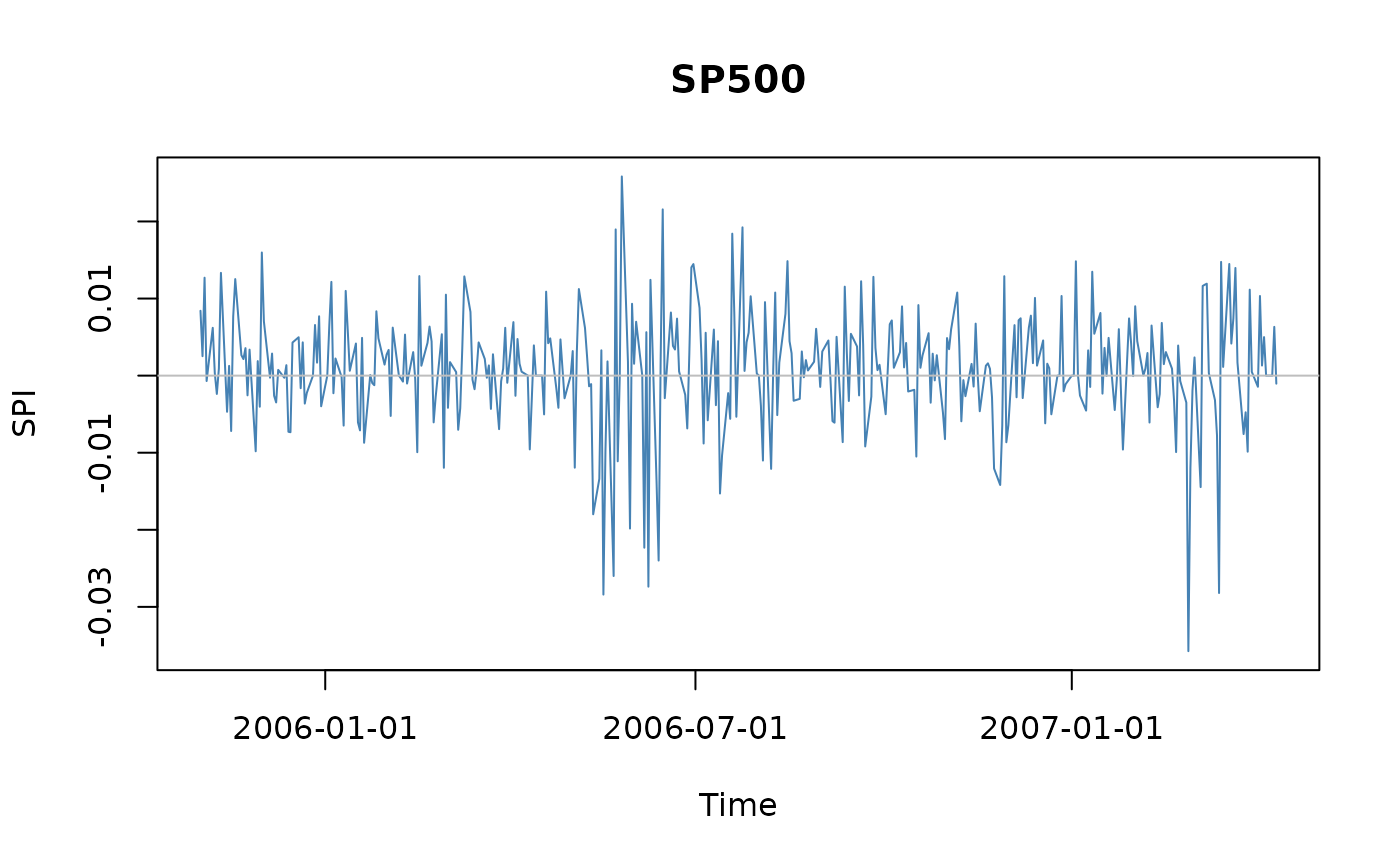Scaling law behaviour
plot-scalinglawPlot.RdEvaluates the scaling exponent of a financial return series and plots the scaling law.
Arguments
- x
an uni- or multivariate return series of class
"timeSeries"or any other object which can be transformed by the functionas.timeSeries()into an object of class"timeSeries".- span
-
an integer value, determines the plot range. The defaault computes a reasonable number of points for the scaling range, assuming daily data with 252 business days per year.
- doplot
a logical value. Should a plot be displayed?
- labels
a logical value. Whether or not x- and y-axes should be automatically labeled and a default main title should be added to the plot. By default
TRUE.- trace
a logical value. Should the computation be traced?
- ...
arguments to be passed to
plot.
Value
a list with the following components:
- Intercept
intercept,
- Exponent
the scaling exponent,
- InverseExponent
the inverse of the scaling component.
Details
The function scalinglawPlot plots the scaling law of financial
time series under aggregation and returns an estimate for the scaling
exponent. The scaling behavior is a very striking effect of the
foreign exchange market and also other markets expressing a regular
structure for the volatility. Considering the average absolute return
over individual data periods one finds a scaling power law which
relates the mean volatility over given time intervals to the size of
these intervals. The power law is in many cases valid over several
orders of magnitude in time. Its exponent usually deviates
significantly from a Gaussian random walk model which implies 1/2.
Examples
## data
data(LPP2005REC, package = "timeSeries")
SPI <- LPP2005REC[, "SPI"]
plot(SPI, type = "l", col = "steelblue", main = "SP500")
abline(h = 0, col = "grey")
 ## Scaling Law Effect
scalinglawPlot(SPI)
## Scaling Law Effect
scalinglawPlot(SPI)
 #>
#> Scaling Law: SPI
#> Plot Intercept 0.7135344
#> Plot Slope 0.5213102
#> Plot Inverse Slope 1.918244
#>
#>
#> Scaling Law: SPI
#> Plot Intercept 0.7135344
#> Plot Slope 0.5213102
#> Plot Inverse Slope 1.918244
#>